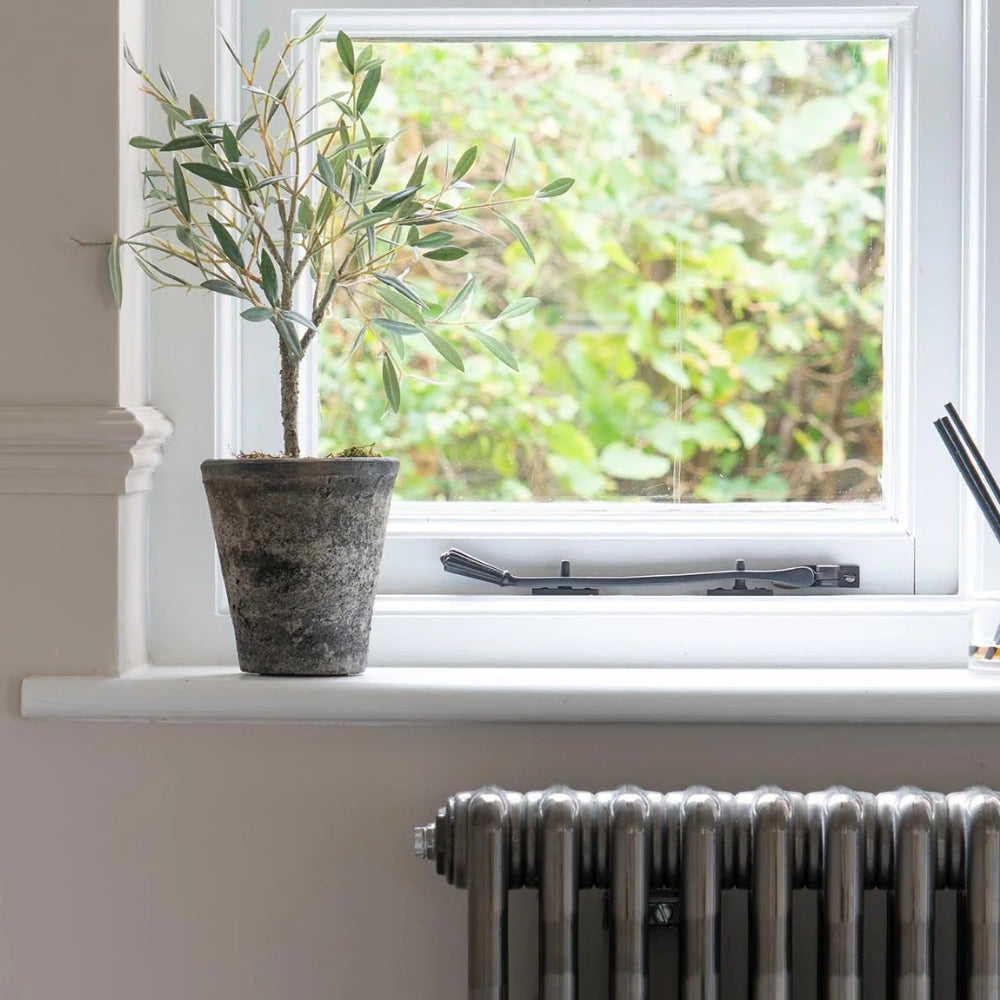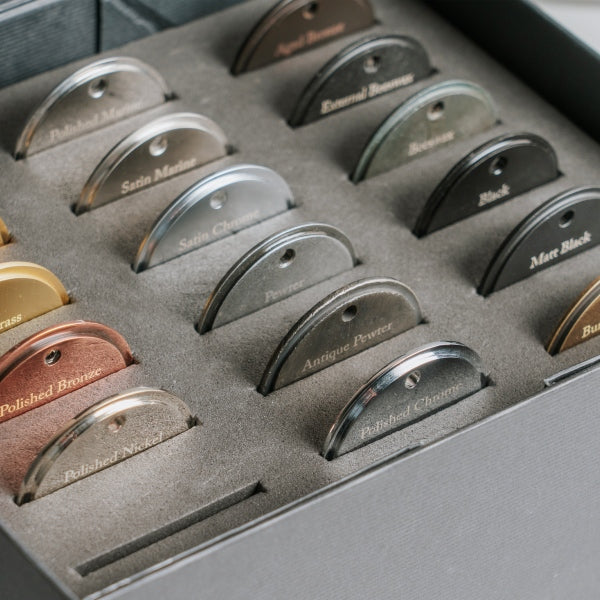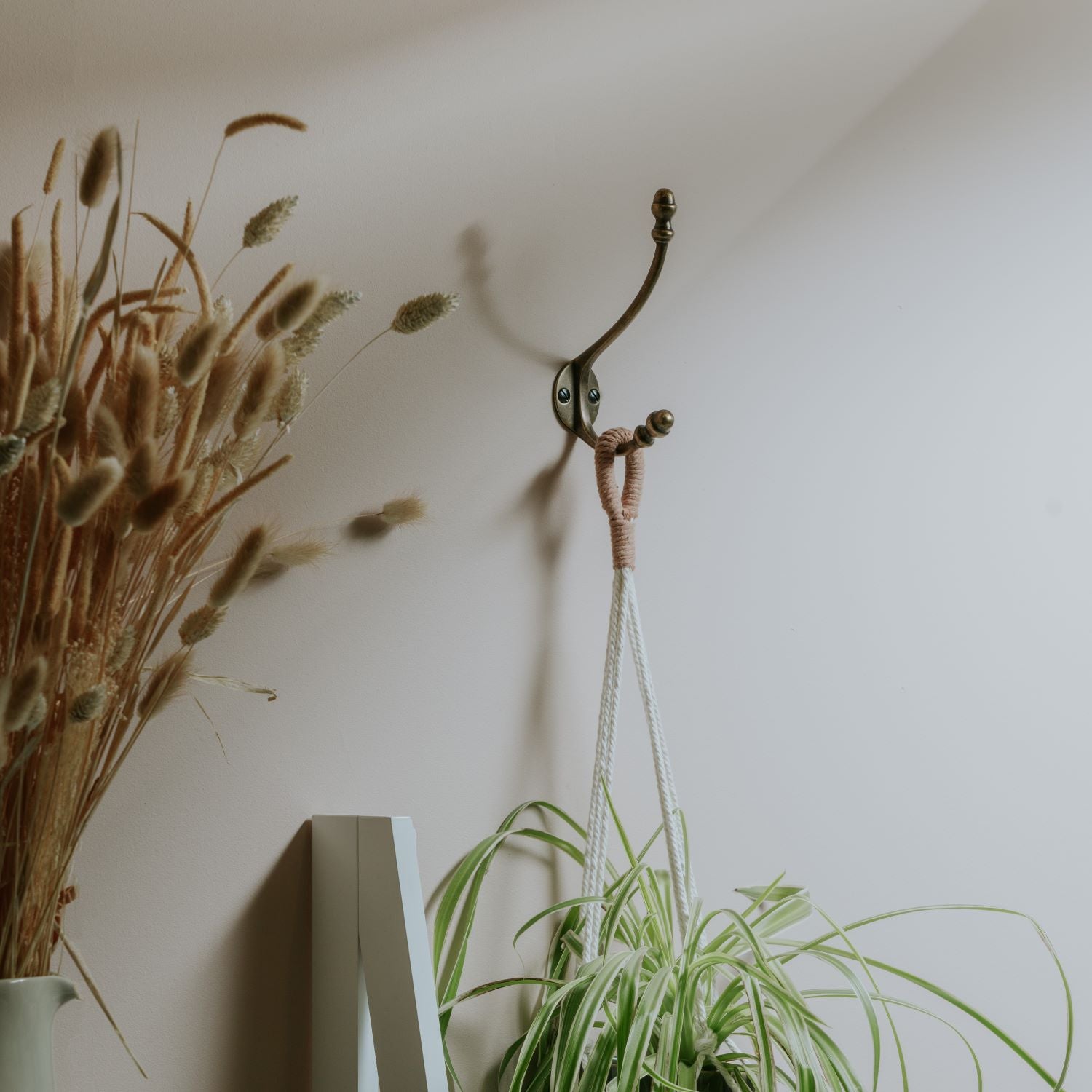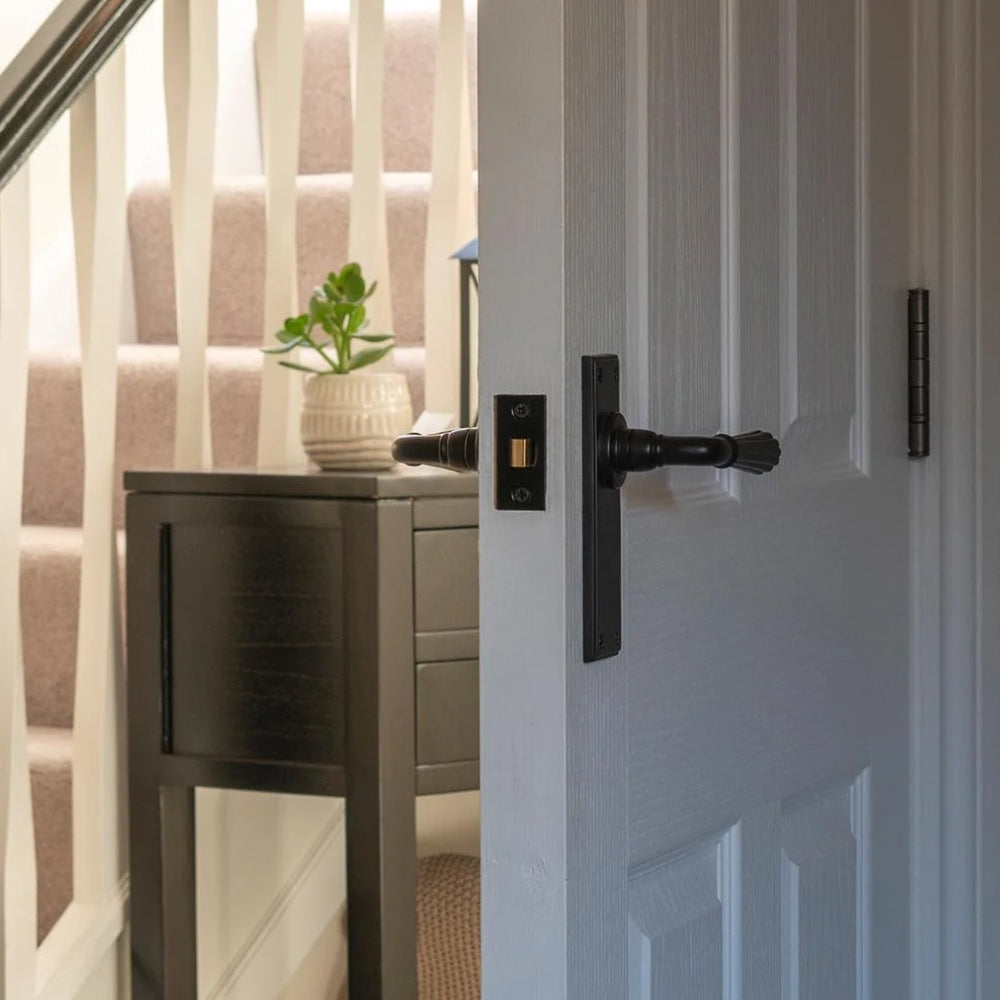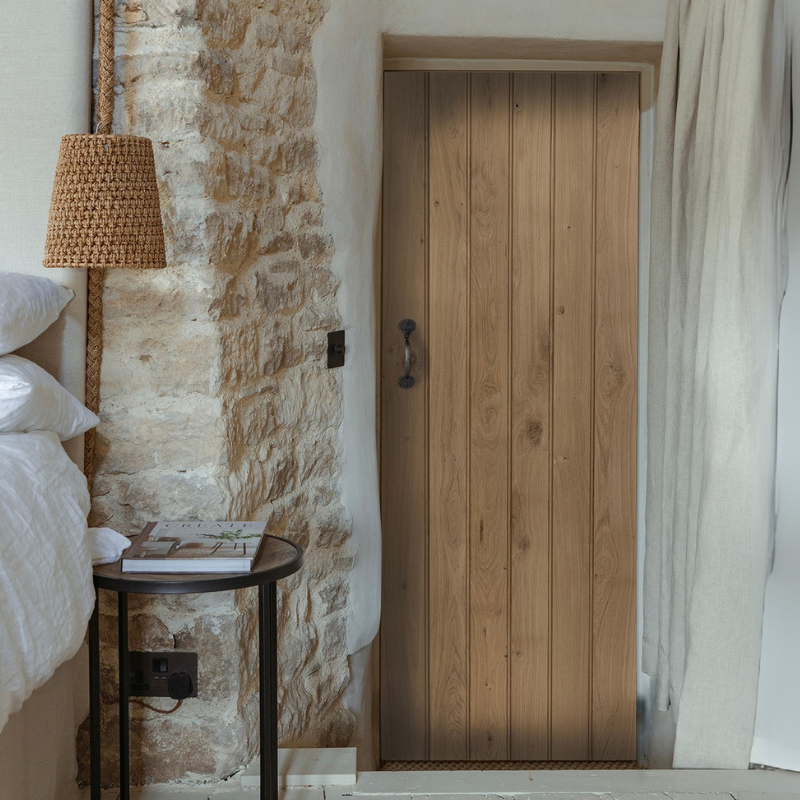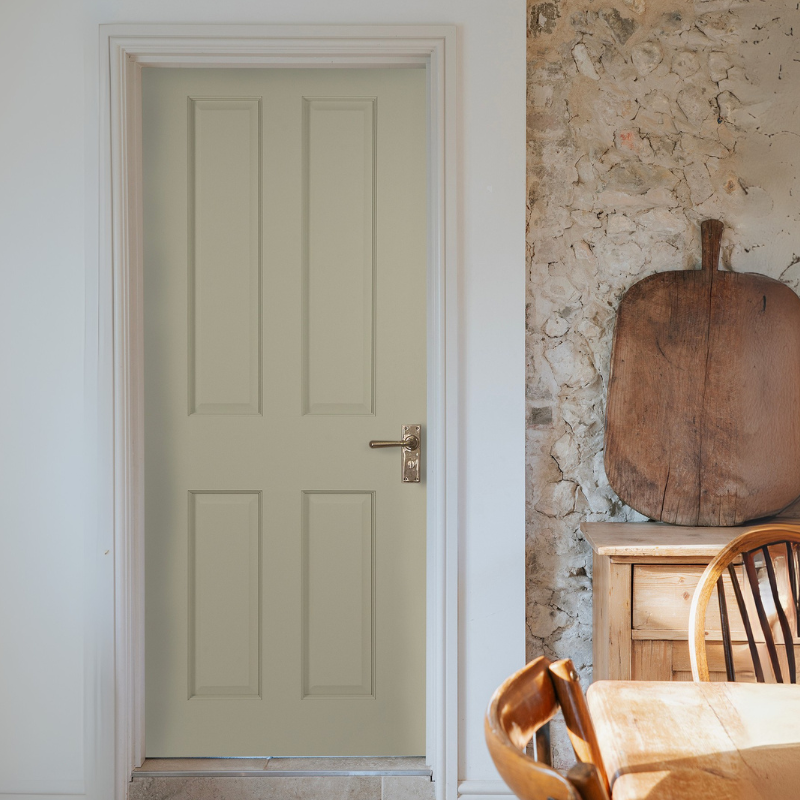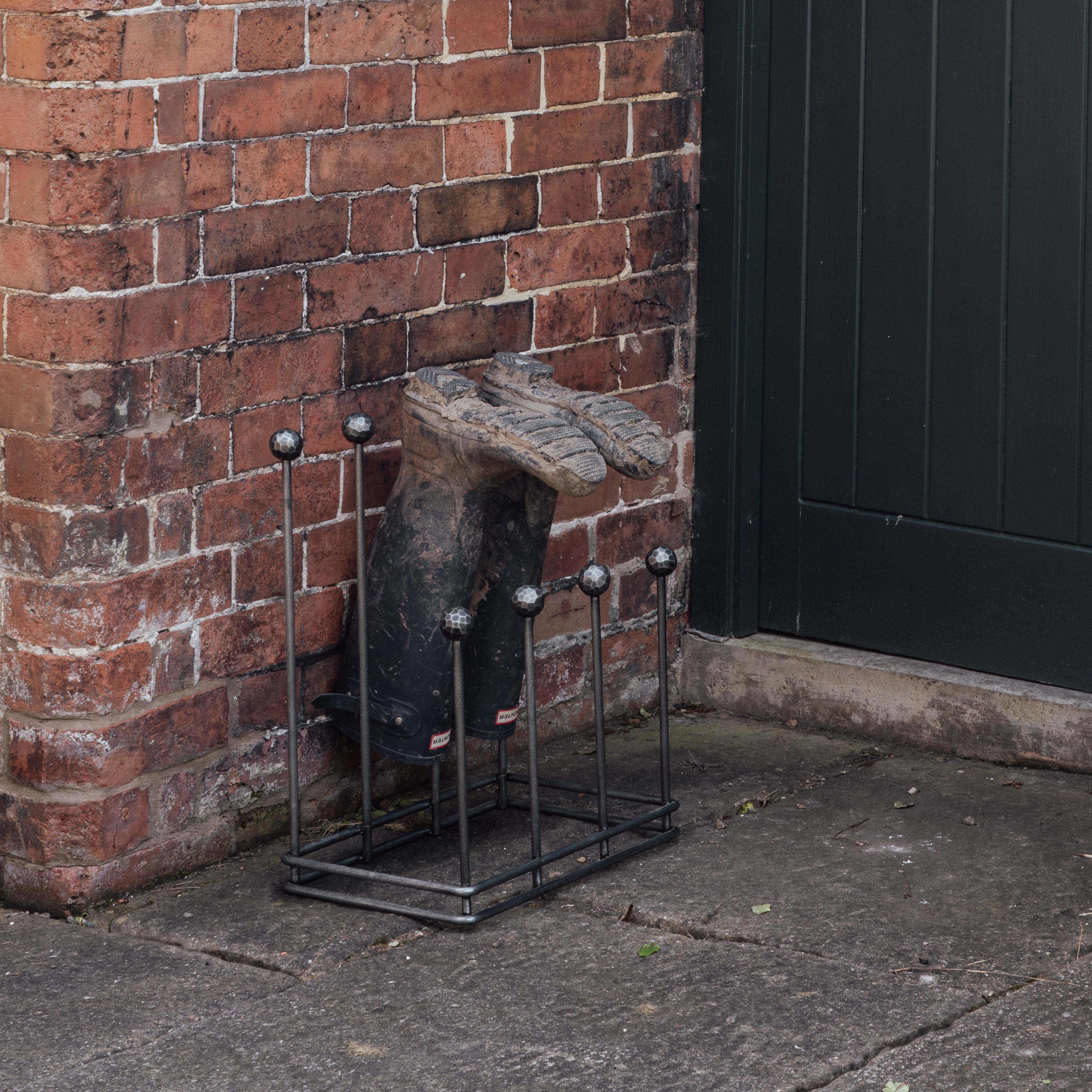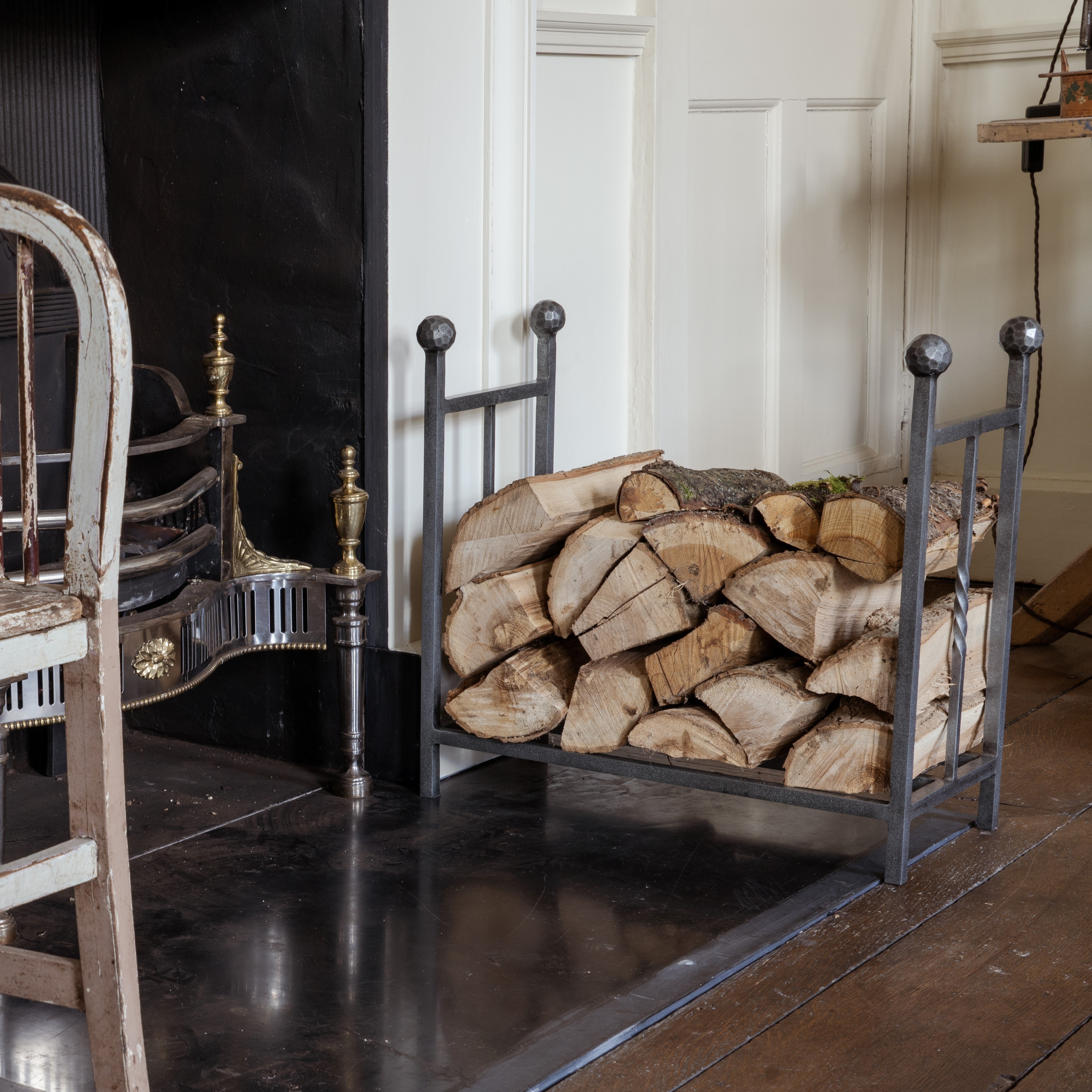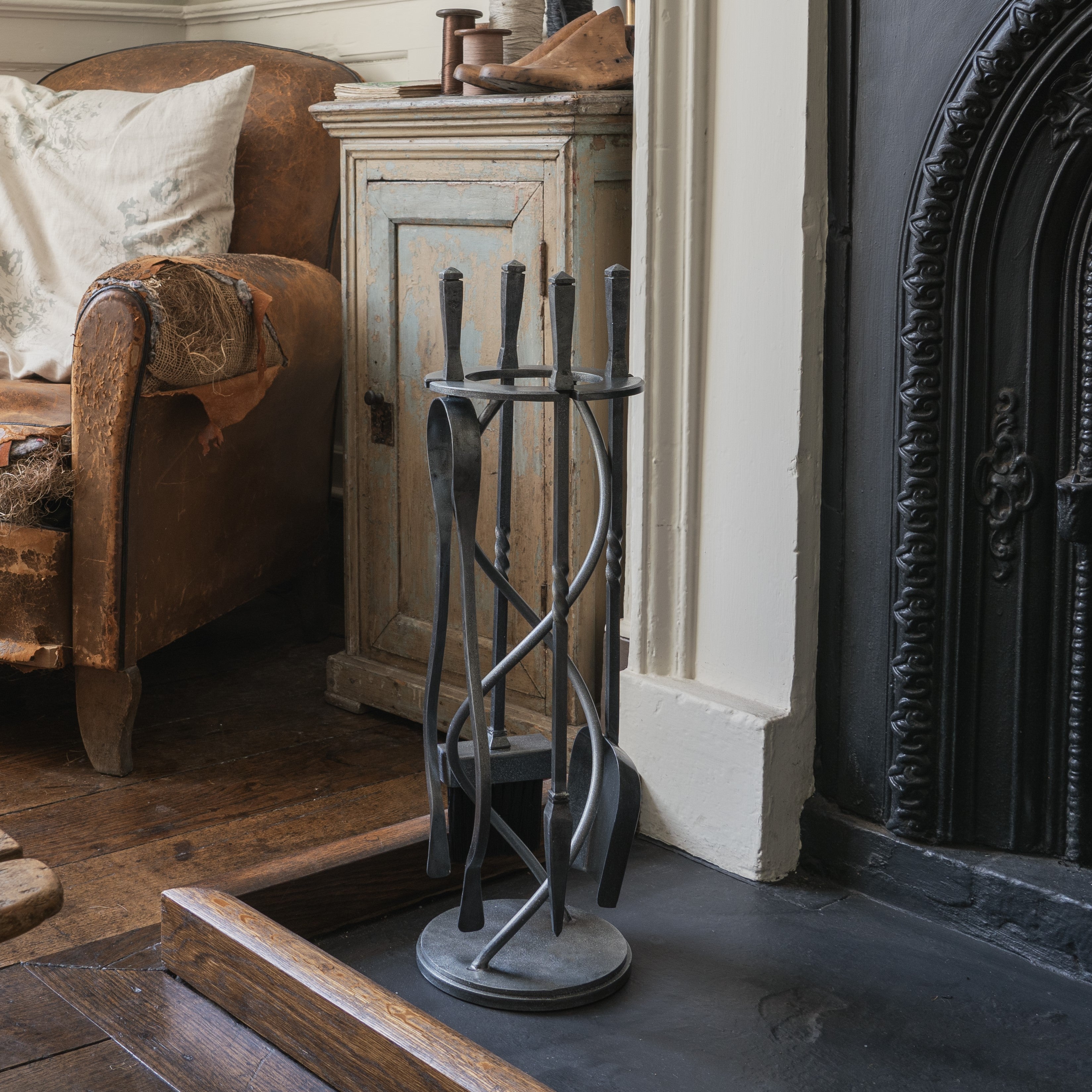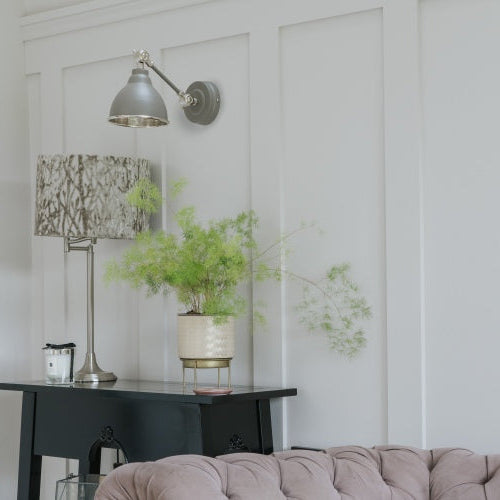What are Thumblatches?
Thumblatches are two-way latches commonly used on internal ledge & brace doors. They consist of several components which act together to open the door.
Above: From The Anvil's Beeswax Gothic thumblatch.
The thumb bar passes through a small hole in the door and through the top of the handle on one side. On the opposite side of the door, the latch bar is screwed to the surface of the door, with the other end remaining loose so it's free to move around.
The screw on staple is fitted to the door, over the latch bar, which restricts the latch bar's movement. All of our thumblatch sets are also supplied with a traditional staple pin which can be used in place of the screw in staple. Traditional staple pins are driven into and through the door, whereas the screw on staple pin is only surface-fixed, so it requires more skill to fit.
Above: From The Anvil's Beeswax Bean thumbaltch with a matching screw on staple.
The keep is fitted to the door frame and the latch bar sits into the keep when the door is closed to prevent it from opening. From the external side of the door, the latch can be opened by depressing the thumb bar. This raises the thumb bar on the other side of the door, lifting the latch bar out of the keep, allowing the door to open.
Similarly, the door can be opened from the opposite side by pushing the thumb bar upwards, hence releasing the latch bar from the keep.
A locking staple pin can be used alongside a thumblatch which fits into the staple and can be inserted just above the latch bar to keep it in place, thereby locking the door. The locking staple pin can only be operated from one side of the door.
Where to Use a Thumblatch
Because thumblatches are designed for use with ledge & brace doors, they're best suited to rustic settings, like old Tudor houses or charming country cottages. Take a look at our Cottage Charm aesthetic for more inspiration.
From The Anvil's thumblatches are available in a choice of Beeswax, Black, and Pewter finishes, all of which are forged from mild steel and pair wonderfully with natural or painted timber.

Thumblatches are usually used in conjunction with two or three T hinges which secure the door to it's frame. Traditionally, a T hinge would span 2/3rds of the width of the door and was used as a way to help secure loose planks together. They also add a decorative touch to the door, and can be coordinated with your thumblatch for a cohesive look.
Above: From The Anvil's Pewter Penny End T hinges and matching Bean thumblatch.
Discover our full collection of From The Anvil thumblatches here.
Or head back to our blog for more guidance and inspiration!






